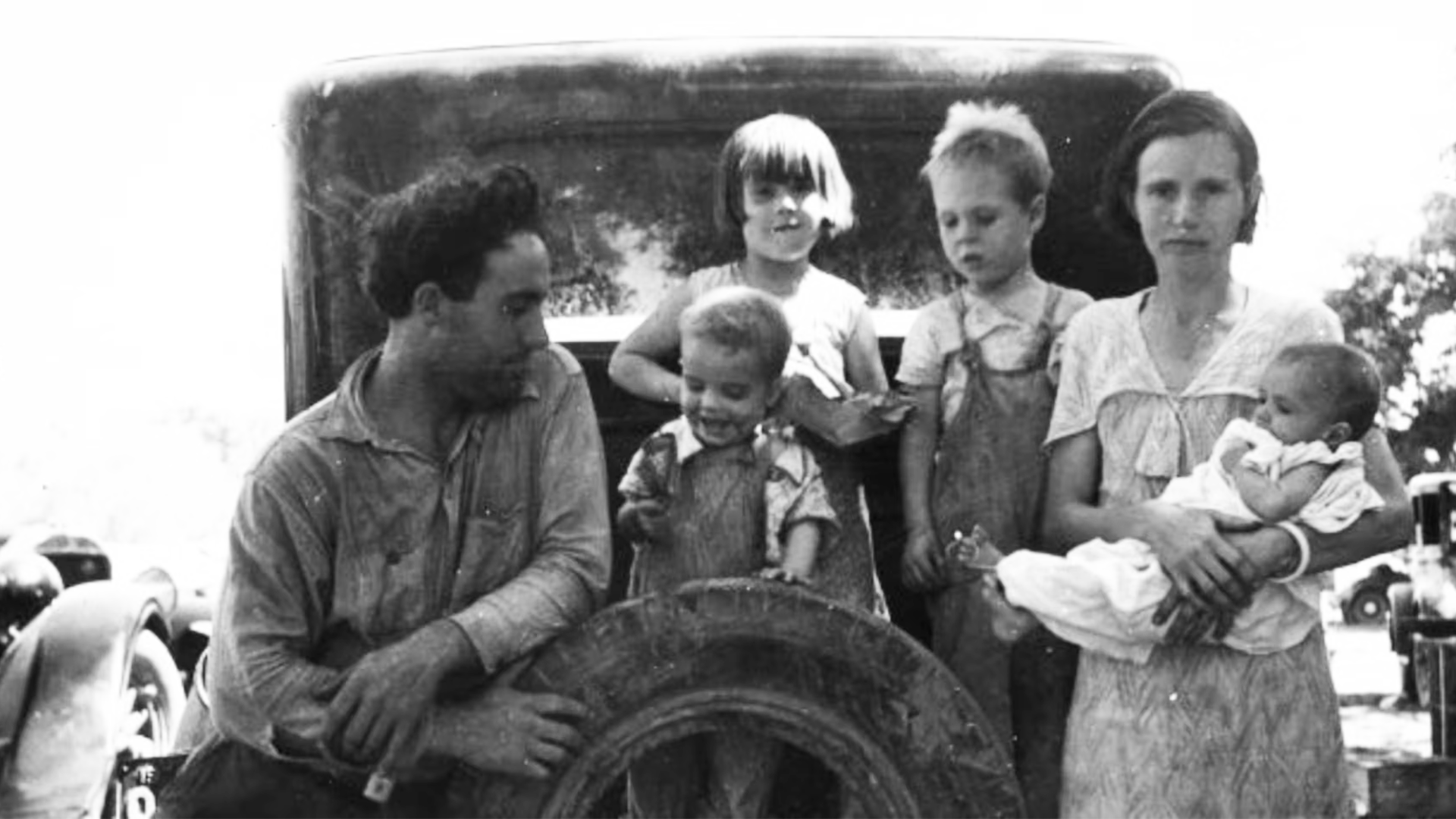The Great Depression: America in Crisis

The Great Depression was the most severe economic crisis in U.S. history, marked by mass unemployment, business failures, and widespread poverty.
The Dive
The roots of the Great Depression stretched far beyond the dramatic stock market crash of October 29, 1929, known as Black Tuesday. Overproduction in factories and farms, risky banking practices, and an uneven distribution of wealth created a fragile economy. When the market collapsed, it shattered confidence, triggering bank failures and a sharp contraction in spending and investment.
By 1933, nearly one in four Americans was unemployed. Factories closed, businesses failed, and farm incomes collapsed. In cities, people lined up at soup kitchens and lived in makeshift shantytowns called 'Hoovervilles.' In rural areas, falling crop prices pushed farmers into foreclosure, forcing many to abandon their land. The Dust Bowl — a combination of drought and poor farming practices — intensified the crisis for farm families in the Great Plains.
Bank failures were especially devastating. Without deposit insurance, ordinary Americans lost their life savings overnight. Panic drove more people to withdraw funds, further destabilizing the banking system and deepening the economic spiral.
The Depression also widened inequalities. African Americans, Native Americans, immigrants, and women often faced even higher unemployment rates and greater discrimination in hiring. Many found themselves excluded from relief programs or forced into the lowest-paying jobs.
President Herbert Hoover’s response relied heavily on voluntary cooperation and limited government intervention, but these measures fell short. As conditions worsened, frustration mounted. Protests like the Bonus Army march in 1932 — when thousands of World War I veterans demanded early payment of promised bonuses — revealed the desperation and anger felt by many Americans.
The Great Depression fundamentally changed the national conversation about the role of government. While it was not ended until the massive mobilization for World War II, the crisis paved the way for Franklin D. Roosevelt’s New Deal, which aimed to provide relief, recovery, and reform.
Why It Matters
The Great Depression was more than an economic collapse — it was a powerful case study in cause and effect, revealing how structural weaknesses can trigger nationwide crisis, how hardship impacts different groups in unequal ways, and how such turmoil can force a society to rethink its priorities, test the resilience of its democracy, reshape the relationship between citizens and their government, and leave lasting lessons about economic policy and inequality.
?
What economic weaknesses made the U.S. vulnerable to the Great Depression?
How did the Great Depression affect urban and rural communities differently?
Why were certain groups, such as African Americans and immigrants, hit harder by the crisis?
How did public perception of the federal government change during the Great Depression?
What lessons from the Great Depression are still relevant to economic policy today?
Dig Deeper
The Great Depression — its causes, impact, and the initial responses of President Herbert Hoover.
Related

The New Deal: Fighting Depression with Bold Ideas
Faced with economic collapse, President Franklin D. Roosevelt launched a revolutionary plan to rebuild America from the ground up. The New Deal wasn’t just policy—it was a bold experiment in hope, action, and government responsibility.

MLK the Disrupter and the Poor People’s Campaign
Dr. Martin Luther King Jr.’s final chapter was about more than civil rights—it was a bold demand for economic justice that challenged the nation’s values at their core.

The Dust Bowl and the Price of Plowed Dreams
On May 11, 1934, a dust storm two miles high turned daylight into darkness and carried America’s soil into the Atlantic Ocean. But this wasn’t just a weather event—it was the collapse of a dangerous illusion.
Further Reading
Stay curious!
